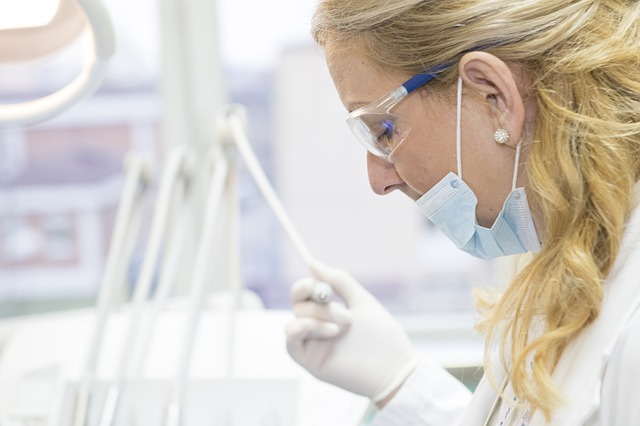You’ve probably gotten a teeth cleaning at a dentist. But, with all those tools, you may be asking yourself how they get your mouth to be so clean?
Well, it’s a question that requires an exploration into tools and techniques used by dentists and dental technicians. Afterall, how can you see anything when you’re laying down and looking up with your mouth open?
In this article, we’ll explore what exactly goes into a routine teeth cleaning from beginning to end. If you have never received a teeth cleaning before, than this is your tutorial to prepare!
Step One: The Exam
When you’re first placed in the dentist chair, you’ll be asked to open wide.
The dentist or dental hygienist will often use a tool to hold your tongue down while they inspect your mouth. They take a look at your teeth, your gums, and any spots where rot and cavities could be forming.
With this step, they determine whether or not you have gingivitis, a disease that causes inflamed gums and bacterial buildup. They will also start developing a diagnosis and let you know about other real or potential problems you have with your dental health.
Step Two: Plaque Removal
Those pesky compounds wearing down your teeth – plaque and tartar – are exactly what your dental hygienist and dentist are looking for when performing a cleaning of your teeth.
The dental professional will use a small mirror welded on a metal bar to guide their movements while using a scalar – a pointy instrument that gets deep in the crevices between teeth – to start literally scraping away everything that can cause bacterial infections in your mouth.
Step Three: The Special Toothpaste
While your own toothpaste works just fine, dentists and dental assistants use a special, grittier toothpaste.
This toothpaste really scrubs the surfaces of your teeth to get everything that may be stuck in small, undetectable cracks. It is also specially designed to clean gums more completely than regular toothpaste.
The other function of this special toothpaste is to polish your teeth. A good polishing will help guard against future buildup of plaque and tartar, but it’s only safe to use twice a year. That’s why this type of toothpaste is only available to dentists.
Step Four: A Real Flossing
Many of us floss daily, but it’s nothing like the rigorous practice of a trained dentist or dental hygienist.
When these professionals floss your mouth, they spend enough time to find absolutely everything in between your teeth. Any food, plaque, or tartar left between the teeth will eventually turn into corrosive elements or become infected.
Don’t worry if your mouth starts to bleed during this step. It’s common that bleeding occurs during flossing, mostly because people don’t actually floss as much as they are supposed to. The dentist or dental hygienist will do it right the first time, leaving your mouth with a wonderfully clean and fresh feeling.
Step Five: Rinsing
Then comes the relief – rinsing.
The solution they use to rinse your mouth has antibacterial qualities meant to clean your mouth on a microbial level. This rinse also washes out any debris moved loose in your mouth by the dental hygienist or dentist.
Step Six: Fluoride Treatment
Fluoride is a compound that strengthens teeth and guards against cavities.
The fluoride binds to your teeth, helping to bind cracks and increase the resilience of teeth from infection, breaking down, and worse. Whether or not you want fluoride, it’s highly suggested by the entire dental community as a way to keep teeth strong.
Step Seven: Schedule an Appointment at Our North Orange Dental Clinic!
Gotcha! But seriously, if you’re reading this, you may need a cleaning
Contact our office today to schedule your cleaning. Our highly-trained dental hygienists will leave your mouth feeling clean and fresh with the best, cutting edge techniques available in the industry. For your mouth, we’ll see you soon!

